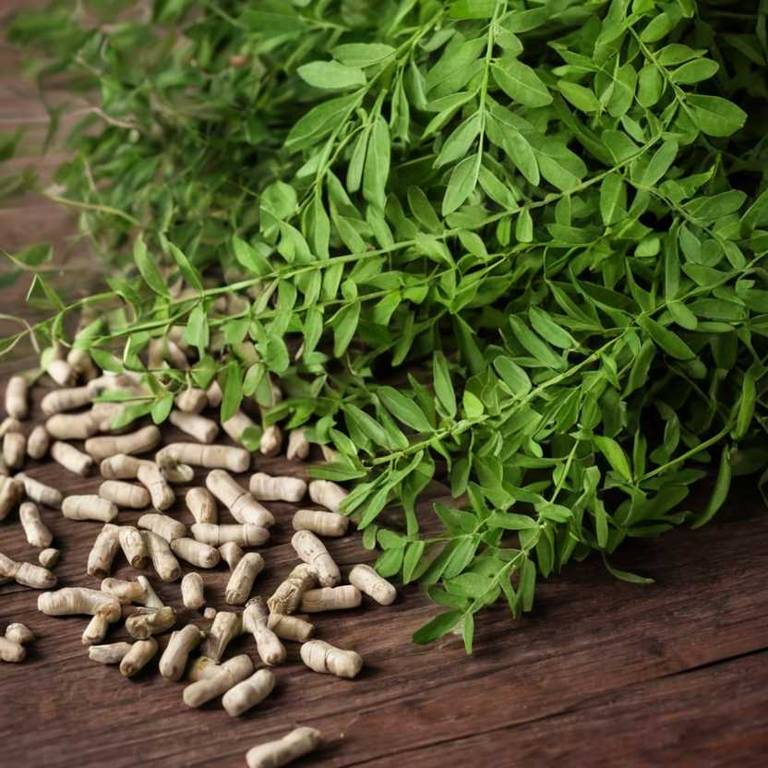By Leen Randell
Updated: Jul 07, 2024
What to know about Robinia pseudoacacia (black locust) before using it medicinally

Robinia pseudoacacia, commonly known as black locust, is a herb that has been valued for its health-promoting properties, which include anti-inflammatory and antibacterial effects that can improve cardiovascular health and boost the immune system.
In terms of horticulture, black locust is a fast-growing tree that is often used for soil stabilization and as a nitrogen-fixing legume, making it an ideal choice for reforestation and conservation efforts. Botanically, black locust is a deciduous tree belonging to the legume family, characterized by its distinctive black pods and fragrant white flowers.
Historically, black locust has been used in traditional medicine for centuries, with references to its medicinal properties dating back to ancient civilizations in North America and Europe.
This article explains the medicinal, horticultural, botanical, and historical aspects of Robinia pseudoacacia.
What are the medicinal properties of Robinia pseudoacacia?
Robinia pseudoacacia helps with skin conditions such as eczema, wounds, and acne due to its antibacterial and anti-inflammatory properties. It is also used to treat respiratory issues like bronchitis, asthma, and coughs. The plant has been used in traditional medicine to reduce fever and alleviate pain.
The medicinal properties of Robinia pseudoacacia are attributed to its active constituents, including robinin, robinidine, and robinoside, which have been shown to possess anti-inflammatory, antioxidant, and antimicrobial activities. These compounds have been isolated and studied for their potential therapeutic benefits.
The parts of the plant most used for medicinal purposes are the flowers, leaves, and bark. The flowers are used to treat respiratory issues, while the leaves are used to reduce fever and alleviate pain. The bark is used to treat skin conditions and wounds.
When used improperly, Robinia pseudoacacia can cause side effects such as nausea, vomiting, and diarrhea due to its toxic compounds. Ingestion of the plant's seeds or leaves can also cause abdominal pain and headaches.
To use Robinia pseudoacacia medicinally, precautions should be taken to avoid overconsumption and improper preparation. The plant should be used under the guidance of a qualified healthcare professional, and its dosage and preparation should be carefully monitored to minimize potential side effects.
What are the horticulural aspects of Robinia pseudoacacia?
Robinia pseudoacacia grow well in well-drained soil in USDA zones 4-9, tolerating dry conditions but not consistently wet soil. It requires full sun to partial shade and can thrive in poor soil.
For optimal growth, plant black locust in early spring or fall, spacing trees 30-50 feet apart. Dig a hole twice the width of the root ball, adding organic matter like compost or manure to improve soil structure and fertility.
Harvest black locust in late spring or early summer, when pods are brown and brittle, containing 10-20 seeds each. Cut branches for fuel or timber, or harvest pods for forage or wildlife food, taking no more than 25% of the tree's foliage each year.
Common pests affecting black locust include Japanese beetles, bagworms, and locust borers. Diseases like powdery mildew, leaf spot, and root rot can also impact the tree, particularly in humid or wet conditions.
What are the botanical aspects of Robinia pseudoacacia?
Robinia pseudoacacia is a deciduous tree with a broad, spreading crown and a short, straight trunk. Its bark is greyish-brown, smooth, and ridged. Leaves are pinnately compound, 15-30 cm long, with 3-7 pairs of leaflets. Inflorescences are axillary, 5-10 cm long.
Robbinia pseudoacacia is classified in the family Fabaceae, subfamily Faboideae, tribe Robinieae. It is a member of the genus Robinia, which includes about 12 species. The specific epithet pseudoacacia refers to its resemblance to Acacia, a similar genus. Common names include black locust, false acacia, and robinia.
Variants of Robinia pseudoacacia include the cultivar 'Umbraculifera', which has a narrow, columnar shape and smaller leaves. 'Crimson Cloud' is another cultivar, with pink flowers. Other variants have been selected for their tolerance of drought or poor soil conditions. These cultivars have not been formally classified.
The native range of Robinia pseudoacacia extends from southeastern Europe to western Asia, and from the Mediterranean to the Caspian region. It has been introduced to North America, South America, and Australia, where it is often used as an ornamental tree. It has also been naturalized in some areas.
The life cycle of Robinia pseudoacacia typically begins with germination, which occurs in 1-3 months. Seedlings grow rapidly in the first year, producing compound leaves and axillary inflorescences. Trees mature in 5-10 years, producing large, spreading crowns. They can live up to 50 years or more in optimal conditions.
What are the historical aspects of Robinia pseudoacacia?
Robinia pseudoacacia is a tree native to North America, with a history of use dating back to the 17th century, where it was cultivated for its timber, fuel, and forage. It was also used for soil erosion control and ornamental purposes.
In ancient Greek mythology, the black locust was associated with the story of Hylas, who was tasked with finding a tree with magical properties to heal a sick king. The tree's wood was said to be able to heal any wound. The Greek botanist Dioscorides also wrote about the tree's medicinal properties.
The black locust has been a symbol of strength, resilience, and fertility in various cultures. In ancient China, it was seen as a symbol of good luck and prosperity, while in some Native American cultures, it was associated with the east direction, representing dawn and new beginnings.
The black locust was first mentioned in historical texts in the 16th century, when it was described by the Italian botanist Pietro Andrea Mattioli as a "locusta nigra". The tree's name was later changed to Robinia pseudoacacia by the Swedish botanist Carolus Linnaeus in 1753.
Historical artifacts of the black locust include ancient woodworking tools and furniture made from its wood, such as the "locust chair" in the Smithsonian Institution's National Museum of American History. The tree's wood was also used to make shipbuilding materials, such as masts and ribs.